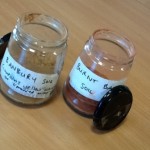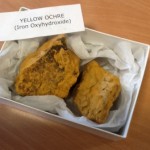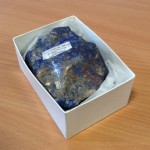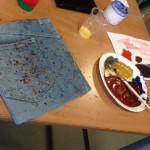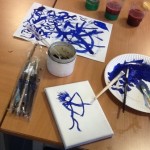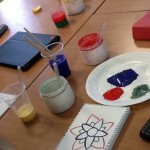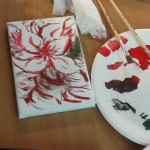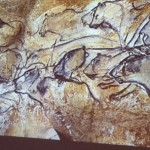 ‘Week 3 has been the most interesting …., as we learnt how such simple 3 key ingredients can make a paint that sticks for thousands of years and is still clearly visible in caves today.’
‘Week 3 has been the most interesting …., as we learnt how such simple 3 key ingredients can make a paint that sticks for thousands of years and is still clearly visible in caves today.’
To understand Manet’s work within a history of paints and pigments, art history in its widest sense, and the context of how he would have worked, we focussed on pigments and paints with a practical focus on making egg tempera paint to use on canvas.
We walked through pigments from Neolithic to Egyptian, Renaissance and finally, modern day contemporary art. We held pigments in their natural forms, studying and grinding them to look at the processes involved from Neolithic times through the Manet’s 19th Century paints. Some came from afar (Afghanistan), others from much closer lands (Banbury!) but all inspired the young people to think about art from a completely different perspective.
Our practical work started with grinding down some malachite, trying to get at as smooth as poss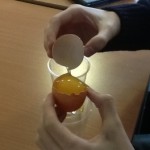 ible, mixing with egg yoke and water to make egg tempera. To make our final paints, we did cheat slightly (sorry Manet!) and used ready-ground pigments for the other colours. With these colours, a huge variety of styles, patterns, images were created by the young people on canvases – cave paintings, geometric shapes, patters, flowers and abstract canvases.
ible, mixing with egg yoke and water to make egg tempera. To make our final paints, we did cheat slightly (sorry Manet!) and used ready-ground pigments for the other colours. With these colours, a huge variety of styles, patterns, images were created by the young people on canvases – cave paintings, geometric shapes, patters, flowers and abstract canvases.
The young people found discovering the origins of our paints an engaging area – here’s some of their comments: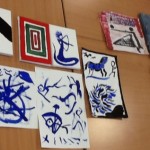
‘I really enjoyed looking at all the rocks and that they are where paint comes from.’
‘Really liked this painting – so simple, yet so effective.’
‘I learnt how people made paints years ago.’
‘I’ve never really thought about where paint came from ….’

